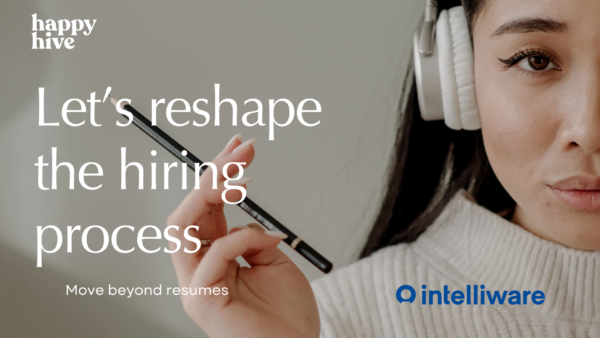The fastest path to happier customers is removing friction from every conversation. A parent on a lunch break opens chat, gets interrupted, and later calls, only to repeat details that were already typed. The agent is juggling windows and policies, the clock keeps ticking, and patience thins. Omnichannel fixes that, not with flash, but with practical systems that carry context from start to finish.
Across banking, insurance, transit, and health care, expectations are higher than the budgets to meet them. Teams must raise quality, reduce effort, and keep risk in check at the same time. Omnichannel is not a channel count, it is a service model that unifies identity, context, and knowledge across chat, email, voice, and messaging. Leaders who treat this as an operating system for the contact centre see faster resolution, fewer escalations, and steadier costs.

Why Use Omnichannel In Contact Centers For Better Outcomes
Customers switch channels for normal life reasons, not novelty. A true omnichannel contact centre treats those hops as one conversation, which means less repetition and fewer dead ends. If you are asking why use omnichannel in contact centers, the short answer is continuity that protects time for your customers and your teams. That continuity shows up as faster resolution, consistent answers, and a calmer experience for agents who no longer rekey the same details. It also lowers risk since fewer handoffs reduce errors and missed disclosures.
The business case builds as operations shift from channel silos to shared platforms. Omnichannel contact centers align metrics, knowledge, and process so leadership can invest where service actually improves outcomes. You gain better insight into intent and churn signals because every touch point sits on the same foundation of identity and context. You also gain resilience, since a spike in one channel does not derail the whole experience. The result is a service model that customers trust and regulators can audit without drama.

9 Omnichannel Strategies For Contact Centers That Leaders Should Prioritize
A strong omnichannel starts with structure, not slogans. Leaders move faster when data, workflow, and guardrails line up across every touch point; omnichannel strategies for contact centers only work when the basics are unified. Focus on the mechanics that let teams see the same customer, keep context alive, and act with confidence. Do that well and the rest follows, including measurable gains against cost, quality, and risk.
1. Unify Channels Into A Single Customer View
Start with a durable identity that ties chat, email, voice, and messaging to one profile. Use multiple identifiers, such as email, phone, and account token, to safely match records without forcing logins every time. Bring interaction history, preferences, and consent into that profile so agents and bots see the same facts. Keep the model simple, with consistent field names and definitions, so new channels slot in without extra middleware. A single view cuts lookup time and stops the guesswork that hurts service and produces rework.
Make data quality a habit, not a project. Set rules for merge, split, and dedupe so identity stays accurate when people change numbers or emails. Collect only what you need, label sensitive fields, and mask them when they are not required for the task at hand. Add clear retention windows, and document who can see which attributes, to satisfy audits without a scramble. This foundation prepares every other move in the playbook, from routing to reporting.
2. Use AI Intent And Skills Based Routing
Route on what the customer needs, not just who picked up first. Train lightweight classifiers to label intent, then map those intents to skills, schedules, and service levels. Blend rules with AI scores so sensitive use cases still follow strict paths. Keep queues small and purposeful, which helps you manage peaks and keep time to answer steady. The result is fewer transfers and a better fit between issue complexity and agent expertise.
Plan for variance and fairness. Use backstops like timeouts, fallback skills, and safe default queues so no one sits in limbo. Review models for drift, false positives, and bias, and allow human overrides when confidence is low. Log every routing decision with the key features used so you can explain outcomes to risk teams without delay. Share routing insights with workforce planners so hiring and training reflect actual patterns, not guesses.
3. Keep Context Across Channels And Handoffs
Carry the transcript, selections, and recent actions from one touch point to the next so nothing needs to be repeated. Use a shared conversation ID that travels with the customer across chat, email, and voice. Expose key context to agents as a compact summary that loads instantly to avoid long reading time. Show what was already tried, such as password reset or address update, to avoid loops that frustrate people. Clear context shortens calls and reduces rework that shows up as repeat contacts.
Treat escalations like a relay, not a reset. Include the reason for transfer, last bot step, and any compliance notes in the handoff package. Design soft landings when systems fail, such as sending a short recap to email after a dropped call. Expire context after a sensible window, and redact sensitive fields, to respect privacy while still helping the next step. Small touches like this build trust while keeping workloads under control.
4. Blend Self Service With Warm Handoffs To Humans
Self service shines when it handles simple, high volume tasks without friction. Use guided flows for tasks like balances, appointments, and simple changes, and prove success with clear confirmations. Offer an easy exit to a person at clear points, not just at error states, so people feel in control. Pass the transcript, the last entered values, and a short summary to the agent so the handoff feels seamless. Customers remember how you treated them when the bot could not finish the job.
Measure containment with care. A short bot session that leads to a quick call with context may serve better than a long loop that hides the exit. Give people channel choice, including call backs and secure messaging, so they can carry on with their day. Design for accessibility, including simple language, readable text, and alternate paths for people who need them. The goal is less effort, not fewer humans.
5. Standardize Knowledge Across All Channels
Build a single knowledge base that feeds chatbots, web help, agent assist, and email templates. Write content in modular chunks that answer a question, list steps, or provide a policy note. Tag each piece with intent, product, jurisdiction, and expiry so the right version shows up in the right place. Keep writing plain, with examples and edge cases that agents can read aloud without hesitation. A consistent knowledge layer is the secret to predictable answers at scale.
Add processes around quality and change control. Require approvals for regulated content, track version history, and show effective dates to agents. Use feedback loops from searches, ratings, and call outcomes to find gaps and stale entries. Publish once and distribute through APIs to every channel to avoid mismatched edits. When knowledge is steady, training shortens and compliance reviews get easier.
6. Give Agents One Workspace With Real Time Assist
Agents move faster when everything sits in one window. Bring the customer profile, contact history, knowledge, and actions into a single console. Offer inline suggestions, summaries, and form fills that agents can accept, edit, or reject. Provide quick launch for secure tasks like identity verification and payment, with guardrails for scope and access. A focused workspace reduces clicks and frees attention for empathy.
Treat training as part of the product, not an afterthought. Use short, hands-on modules, real scenarios, and shadow sessions to build confidence. Pair new assist features with roll back options so teams feel safe trying them on live contacts. Monitor cognitive load with simple cues, and retire unused widgets that clutter the screen. Lower stress shows up in better tone, steadier outcomes, and longer agent tenure.
7. Personalize Service Using Consented First Party Data
Use what customers have shared with permission to shape the experience. Show preferred language, channel choice, and known devices so authentication and service flow match the person. Surface context like life events or product milestones to time outreach and offers with care. Keep personalization subtle, such as recalling a recent order or setting, rather than guessing at sensitive traits. The best signal is still what the person asks for today.
Respect comes first. Track consent state, give people easy ways to adjust preferences, and honour suppression lists across systems. Store only what you can protect, encrypt data in motion and at rest, and avoid moving files between tools without need. Set retention by use case and region, and document each lawful basis so audits are quick and precise. Personalization without consent is a risk, not a feature.
8. Measure Customer Experience With Shared KPIs
Pick a small set of shared KPIs that every team can influence. Tie them to customer effort, quality of outcome, and cost to serve, not just speed. Examples include first touch resolution, time to helpful response, and promise kept rate after the contact. Add a trust measure like consent accuracy or privacy events to keep guardrails visible. Shared measures align incentives and reduce battles between digital, operations, and branches.
Instrument every channel the same way. Deploy consistent tags, outcome codes, and survey triggers so data tells one story. Calibrate your results with call listening and case reviews since numbers can hide nuance. Publish scorecards that show trends, not just snapshots, and meet weekly to pick one fix to ship. Progress compounds when teams focus on one improvement at a time.
9. Build Privacy, Security, And Compliance Into Workflows
Map the path of personal data through each step, and remove fields that do not serve the task. Use role based access, least privilege, and just in time elevation for sensitive actions. Store recordings and transcripts with clear rules for redaction, search, and review. Apply encryption, key rotation, and secure secrets storage across every system, including analytics. When safety is baked into the flow, you reduce both incidents and anxiety.
Plan for audits and incidents before they arrive. Keep tamper evident logs that tie actions to agents, systems, and timestamps. Set vendor intake checks for data residency, breach history, and security posture, and revisit them on a schedule. Run tabletop drills for outages and policy breaches so teams know who does what when tension rises. Clear routines build trust with customers, partners, and regulators.
Omnichannel works when it looks simple from the outside and stays structured inside. A single view, sensible routing, and steady knowledge create a loop that keeps getting better. Add measurement and controls, and you get scale without losing the human touch. That mix sets you up for the next step, which is proving outcomes with clear numbers.

How To Measure Success In Omnichannel Contact Centers
Success needs proof, not vibes. Pick signals that capture effort, quality, and safety across the whole journey. Use the same definitions across channels and teams so the story holds up in steering meetings. Aim for a small set you can improve each sprint rather than a wall of charts.
- Resolution rate across channels, paired with time to helpful response.
- Repeat contact reduction for the same issue within a set window.
- Warm handoff success rate, including context transfer completeness.
- Agent assist adoption and impact on handling time and promised outcomes.
- Knowledge accuracy, measured through search success and case audits.
- Privacy and compliance health, including consent accuracy and audit readiness.
Treat metrics like a steering wheel, not a scoreboard. Review weekly, pick one fix, ship it, and watch the lagging indicators move later. Share the wins with frontline teams so the loop stays healthy. Numbers that tie to reduced effort and fewer risks will keep funding strong.
Common Questions About Omnichannel Contact Centres
Leaders often want clear, direct answers before they commit to change. Common points of hesitation include identity, phasing, knowledge, and the role of AI. Clarity on those topics reduces risk and accelerates progress across teams. Clear guidance helps frame pilot goals and sets expectations with stakeholders.
What Is An Omnichannel Contact Centre vs Multichannel, And Why Does It Matter?
The main difference between omnichannel and multichannel is continuity of identity and context. Multichannel offers many doors, but each session stands alone, which forces repeat effort and breaks measurement. Omnichannel treats those doors as paths to one conversation that carries forward across steps and time. That shift matters because it reduces effort, improves accuracy, and lets you invest in fixes that help every channel at once. It also carries compliance benefits because records are stitched and auditable.
How Should A Regulated Organisation Approach Identity Resolution Across Channels?
Start with a minimal match set such as customer ID plus one verified contact method. Add a strong step up for sensitive actions, such as passcodes or one time codes, and apply it consistently. Store match logic and outcomes so you can explain decisions in audits. Avoid collecting extra fields during service that you cannot protect or do not need. Keep self service flows flexible so returning customers can pick up where they left off without friction.
What Data Should Be Included In A Unified Customer View For Service Teams?
Focus on what helps service, not a complete profile. Include identifiers, contact preferences, recent interactions, open cases, and key products held. Add consent state, accessibility needs, and risk flags that affect conversation design or policy steps. Keep calculated scores and marketing fields in a separate layer so agents are not overloaded. Show data owners and update dates so teams trust what they see.
How Do You Phase The Rollout Of Omnichannel Without Disrupting Service?
Start with one journey that cuts across channels, such as a common billing or claims task. Stand up the identity model, the knowledge layer, and a simple route map for that journey. Pilot with a small group, measure outcomes, and publish what changed for customers and agents. Add one channel or one new intent at a time, and retire old flows as soon as the new path is stable. This approach builds confidence while keeping risk bounded.
How Can AI Assist Agents Without Risking Errors Or Bias?
Treat AI as a suggestion engine that your people can accept, edit, or ignore. Require citations or pointers for facts, and lock down sensitive fields that should never be auto filled. Monitor for drift using spot checks, and rotate datasets that overfit to rare cases. Keep a human in the loop for actions with legal or financial impact, and log those decisions. Clear controls let you scale assistance without losing judgement.
Strong answers set clear expectations across teams. A shared view of identity, context, and guardrails removes debate and speeds up delivery. Clarity frees people to focus on outcomes rather than internal translation. When clarity meets accountability, progress becomes routine.

How Electric Mind Supports Omnichannel Contact Center Adoption
Electric Mind partners with technology and operations leaders to build the foundations that make omnichannel work. We design the data model for a unified customer view, stitch it to your contact centre systems, and establish clear retention, consent, and access rules. Our engineers instrument channels with consistent event tags, integrate knowledge sources, and set up real time assist that fits your risk posture. We work alongside your teams to simplify agent workflows, reduce swivel chair moves, and stand up routing that reflects actual skills and schedules. The result is a service model that is easier to run and easier to audit.
Delivery is structured, measurable, and grounded in your context. We start with one journey, set baselines, and ship improvements in short cycles tied to clear KPIs. Security, privacy, and compliance sit in the design, including data residency, role based access, and traceable decisions. You get working systems, clear documentation, and people who know how to run them. You can trust our team to bring experience, candour, and care to work that carries real stakes.
Building Omnichannel That Actually Works — Insights from The Electric Mindset
In The Electric Mindset episode “Contact Centers in the AI Era,” Nick Dyment and Michael Lang discuss what this blog explores in practice — how to unify identity, context, and human empathy so every interaction feels connected. They share stories of legacy systems where agents juggled 20 screens and customers repeated themselves endlessly, contrasting that with today’s AI-enabled omnichannel models that carry context and intent from chat to voice to email without friction.
The episode highlights that real transformation happens when technology and process evolve together. AI helps route conversations by intent, summarize calls, and surface the next best action, while humans focus on empathy and judgment. As Michael puts it, “The goal isn’t fewer people, it’s fewer wasted moments.” That shift—from channel chaos to connected context—is exactly what this article defines as the foundation of true omnichannel service.
Listen: Electric Mindset – Season 1, Episode 6: Contact Centers in the AI Era
.png)






